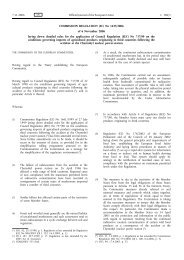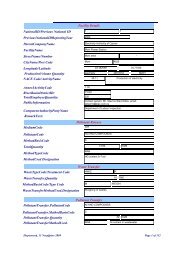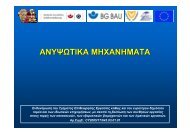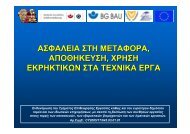Non binding guide to good practice for implementing Directive
Non binding guide to good practice for implementing Directive
Non binding guide to good practice for implementing Directive
- No tags were found...
You also want an ePaper? Increase the reach of your titles
YUMPU automatically turns print PDFs into web optimized ePapers that Google loves.
ANNEX C Health risks, signs and symp<strong>to</strong>msC.1 EFFECTS OF WHOLE-BODY VIBRATIONON THE HUMAN BODYThe transmission of vibration <strong>to</strong> the body is dependen<strong>to</strong>n body posture. The effects of vibration are there<strong>for</strong>ecomplex. Exposure <strong>to</strong> whole-body vibration causesmotions and <strong>for</strong>ces within the human body that may:• cause discom<strong>for</strong>t,• adversely affect per<strong>for</strong>mance.• aggravate pre-existing back injuries and• present a health and safety risk.Low-frequency vibration of the body can cause motionsickness.Epidemiological studies of long-term exposure <strong>to</strong> wholebodyvibration have shown evidence <strong>for</strong> an elevated risk<strong>to</strong> health, mainly in the lumbar spine but also in the neckand shoulder. Some studies have reported evidence ofeffects on the digestive system, the female reproductiveorgans and the peripheral veins.C.2 LOWER-BACK PAIN AND BACK, SHOULDEROR NECK DISORDERSThe results of epidemiological studies showa higher prevalence rate of low-back pain,herniated disc and early degeneration of thespine in whole-body vibration exposed groups.Increased duration of vibration exposure andincreased intensity are assumed <strong>to</strong> increasethe risk, while periods of rest reduce the risk.Many drivers complain also about disordersin the neck-shoulder although epidemiologicalresearches are inconclusive on this effect.Low-back pain and back, shoulder or neckdisorders are not specifi c <strong>to</strong> vibration exposures.There are many confounding fac<strong>to</strong>rs such asworking posture, anthropometric characteristics,muscle <strong>to</strong>ne, physical workload, and individualsusceptibility (age, pre-existing disorders, muscle<strong>for</strong>ce, etc.).Driving of mobile machines does not only involveexposure <strong>to</strong> whole-body vibration but also <strong>to</strong> severalother fac<strong>to</strong>rs that put strains on the back, shoulder orneck. The most important being:• prolonged sitting in constrained postures,• prolonged sitting in poor postures,• frequent twisting of the spine• needing <strong>to</strong> adopt twisted head postures,• frequent lifting and material handling (e. g. driversof delivery trucks),• traumatic injuries,• unexpected movements,• unfavourable climatic conditions and• stress.In some countries and under certain conditions, lumbardisorders occurring in workers exposed <strong>to</strong> wholebodyvibration are considered <strong>to</strong> be an occupationaldisease.C.3 OTHER DISORDERSThe question of whether whole-body vibrationexposure might lead <strong>to</strong> digestive or circula<strong>to</strong>rydisorders or adverse affects on the reproductivesystem remains open. In some cases an increasedprevalence of gastro-intestinal complaints, pepticulcer and gastritis have been reported in drivers ofvibrating vehicles. Whole-body vibration seems <strong>to</strong> bea fac<strong>to</strong>r that in combination with the long-term sittingposture of drivers contributes <strong>to</strong> the occurrence ofvaricose veins and haemorrhoids. Some studieshave reported evidence of effects on the digestivesystem, the female reproductive organs and theperipheral veins. One study showed a greaterthan expected incidence of stillbirth among womenexposed <strong>to</strong> vibration in the transport sec<strong>to</strong>r.PART II Guide <strong>to</strong> <strong>good</strong> <strong>practice</strong> on Whole-Body Vibration – ANNEXES A-H87


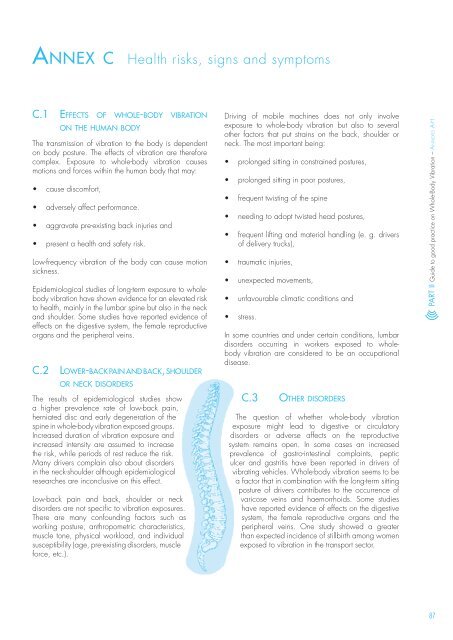
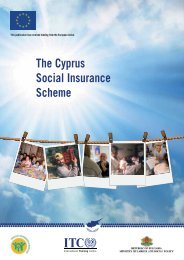


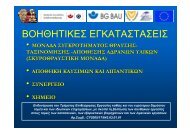
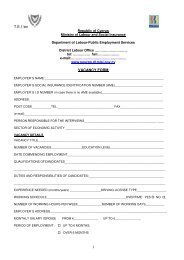
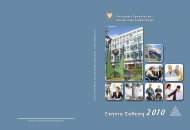
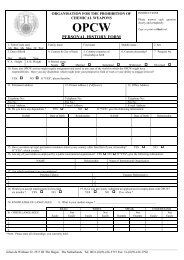
![Hadjimichael[1].pdf](https://img.yumpu.com/33937965/1/190x135/hadjimichael1pdf.jpg?quality=85)

